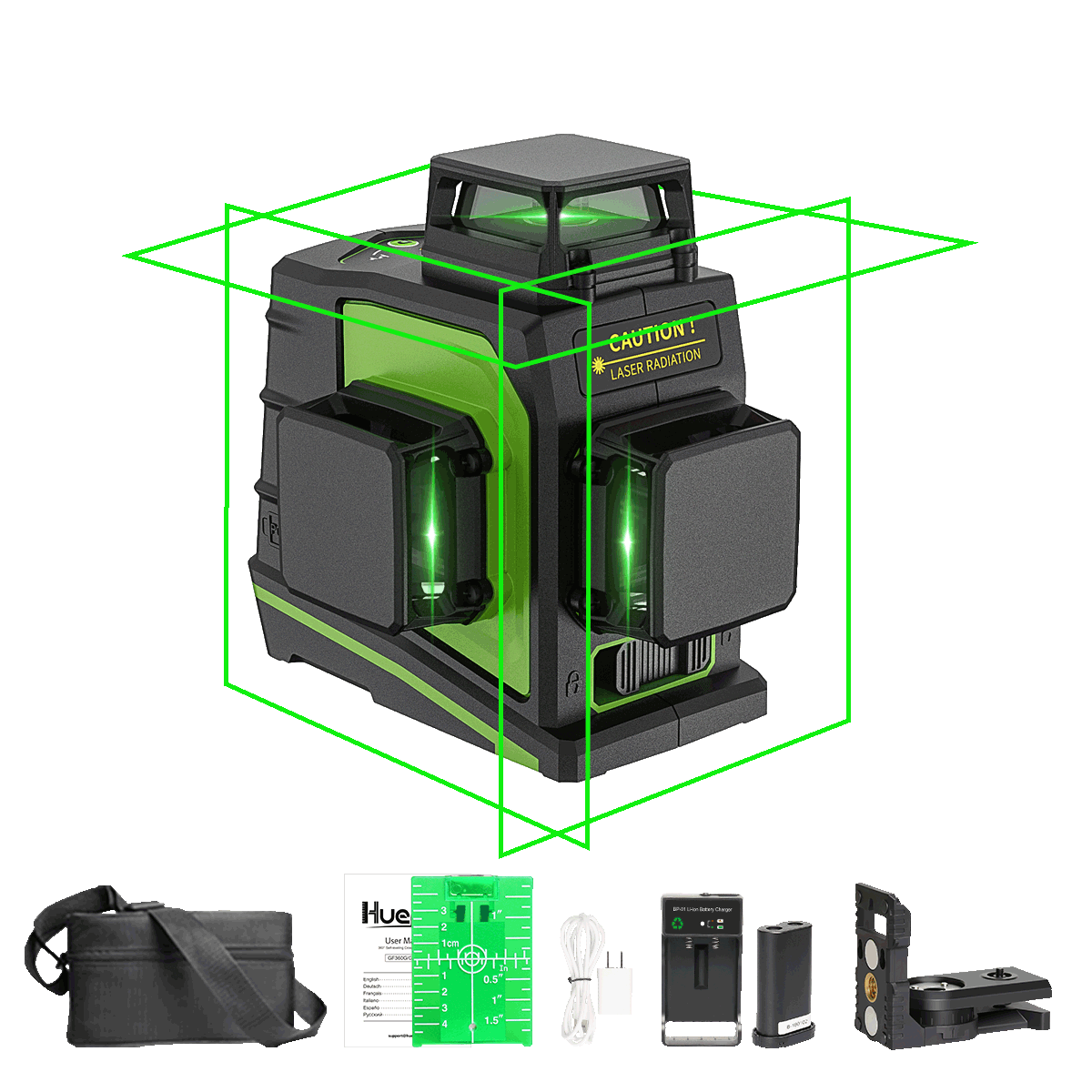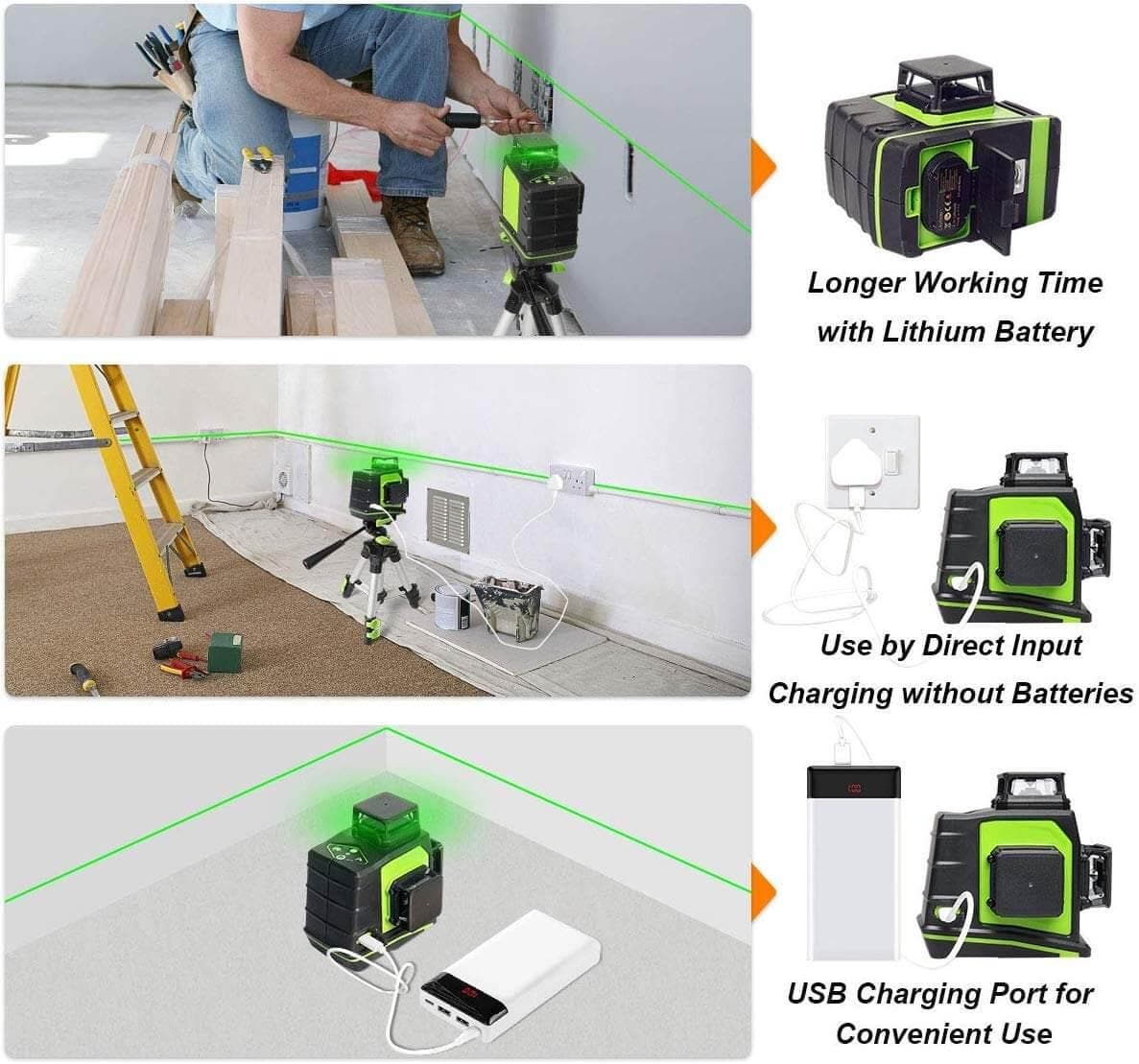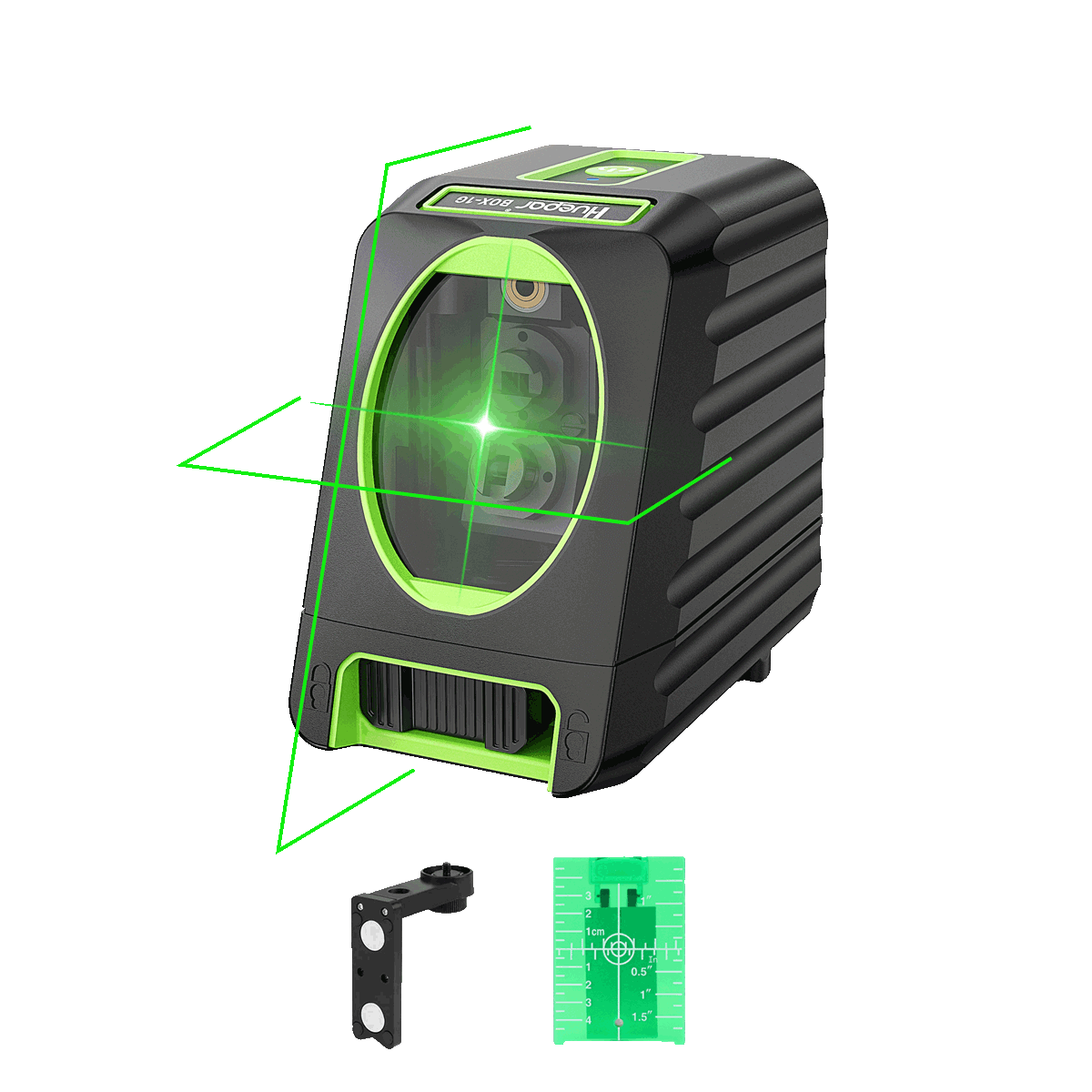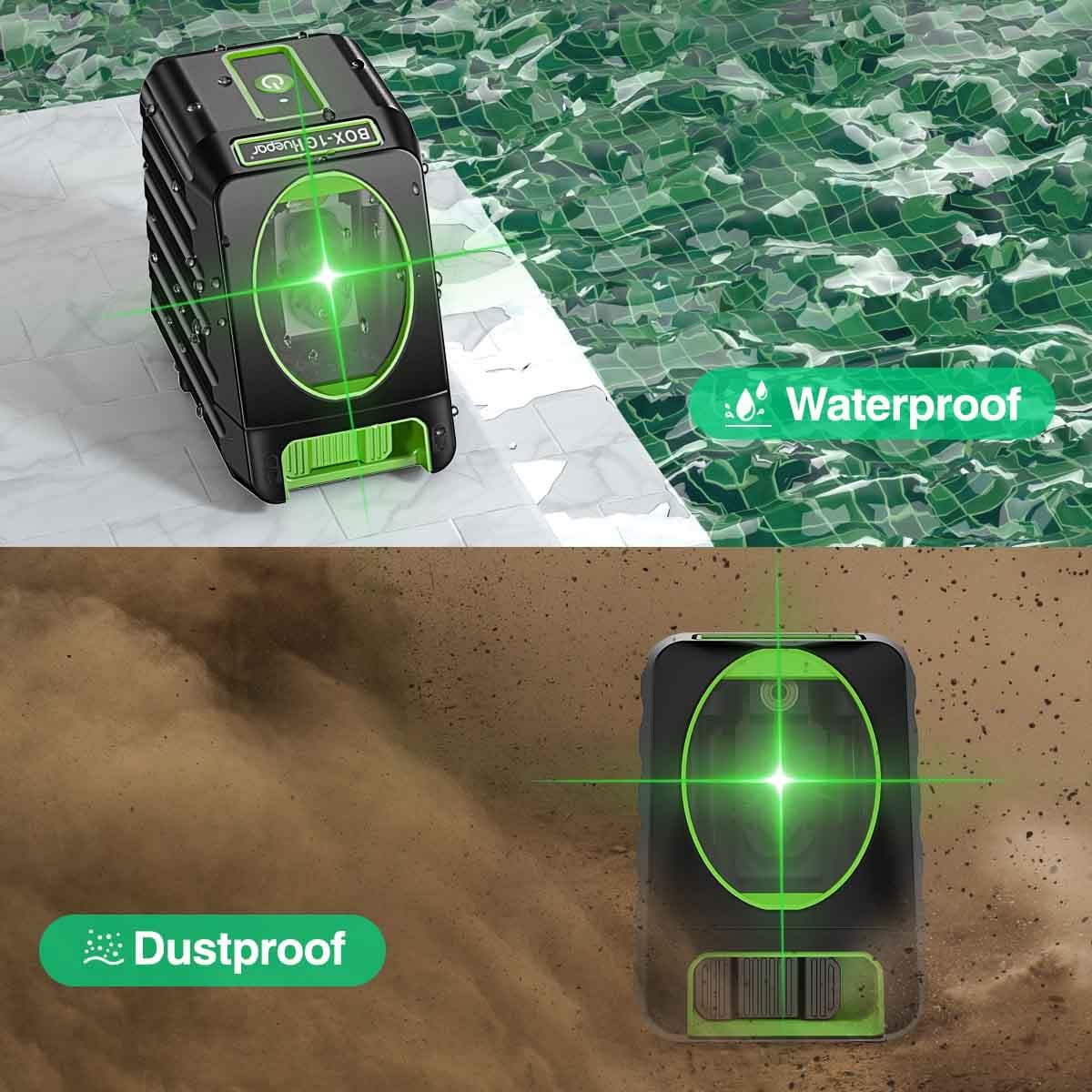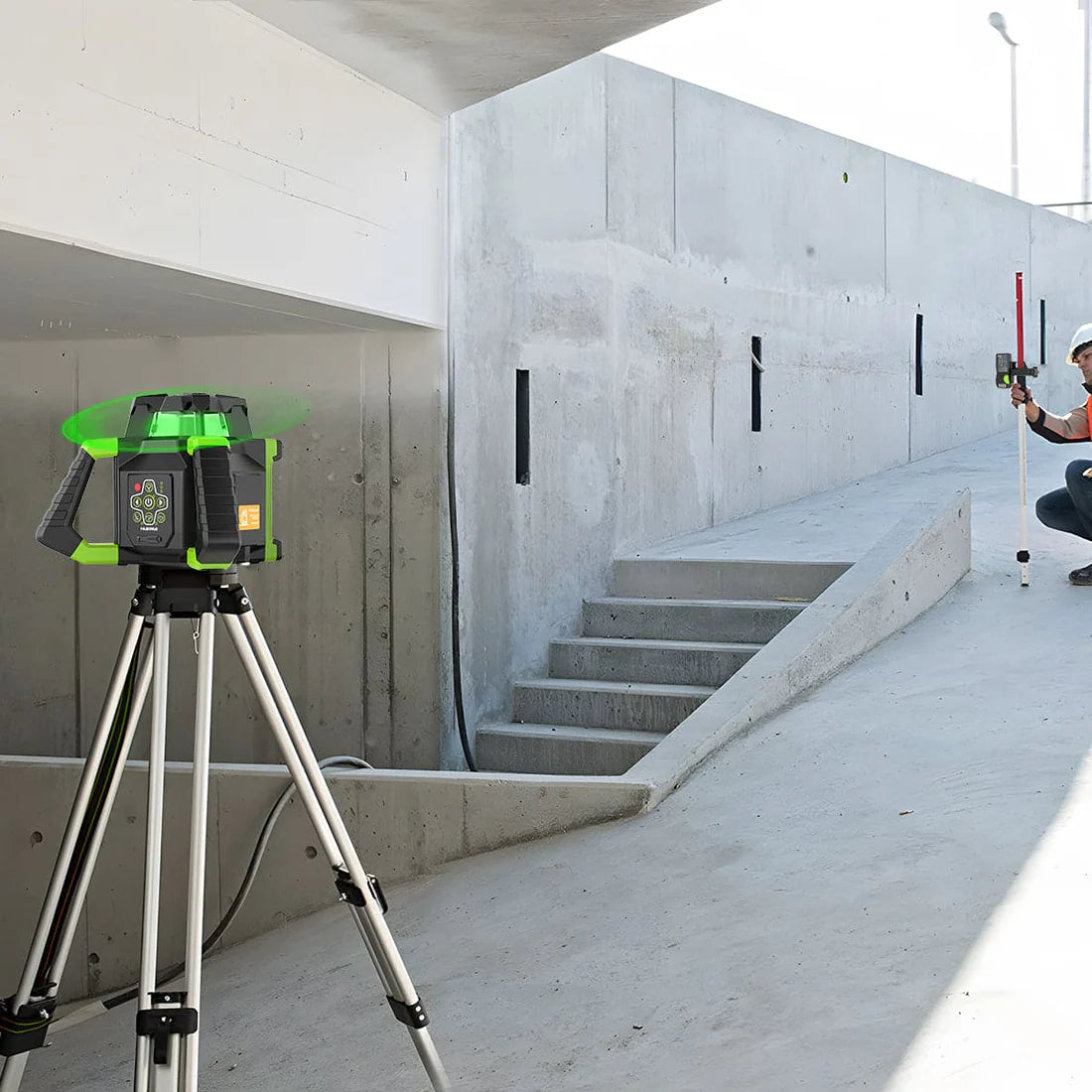
What Is A Rotary Laser Level?
Rotary laser levels are specialized devices on every construction site, where they are used to establish horizontal and vertical reference planes with a high degree of accuracy. These versatile tools, like Huepar RL300HVG Laser Level, with their rotating laser beams, create a continuous 360-degree plane of light that enables contractors and builders to level foundations, lay tiles, install drywall, and perform various other leveling tasks with amazing accuracy.
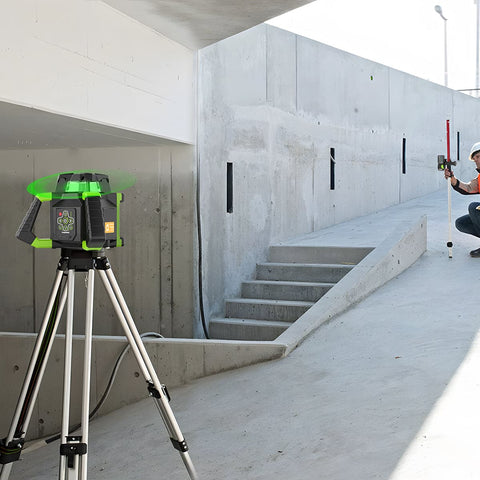
Rotary laser levels have become indispensable at building sites for their ability to automate leveling processes and raise efficiency while ensuring a high degree of accuracy through the length and breadth of the project. Be it large commercial buildings, residential properties, or even the smallest and most detailed landscaping, these tools offer a steady and continuous point of reference that greatly reduces mistakes and reworks, thereby saving time and reducing costs in the process.
How Rotary Laser Levels Work
Rotary laser levels are devices that project a precise 360° laser beam, rotating at high speed, to create a level reference plane. This rotary laser beam shall appear to the naked eye as a bright, continuous, unbroken horizontal or vertical line depending on the orientation of the device. It is normally in a range of 600-1,000 revolutions per minute.
These tools utilize diode technology to emit a focused laser beam that will carry for long distances with strong accuracy and visibility. Rotary laser levels are universal tools that can be used both indoors and outdoors in the construction, surveying, and landscaping industries, wherever highly accurate leveling and alignment jobs are required.
Indoors, the laser beam can easily be detected on surfaces like walls, ceilings, and floors to allow such tasks as leveling cabinets, aligning partitions, or setting tile layouts. Outdoors, this laser beam is clearly visible over long distances for such work as grading, excavation, and site preparation applications. The rotation of the beam allows for complete coverage without requiring manual sweeping or multiple setups.
Rotary Laser Leveling Methods
Manual Leveling
The rotary laser levels give manually leveling, which makes the laser beam perfectly level or sets at a desired slope or grade. This requires a good amount of skill and patience, since you would have to carefully make precise adjustments to the positioning of the level until the laser beam is properly aligned.
The common method involves setting up a rotary laser level on a tripod, an approximate levelling using built-in vial bubbles, and then accurately adjusting the position by the leveling screws. During such adjustment, you will refer to a laser detector or receiver for the beam's position relative to your intended level plane or slope.
This can, of course, be very time-consuming with manual leveling, especially over longer distances. On the other hand, it does introduce some flexibility in setting slopes and grades. It is a good option for the experienced user operating on smaller job sites or situations that require frequent grade changes.
Self-Leveling
The self-leveling rotary laser level will have an internal pendulum mechanism that will automatically keep the laser beam level in the machine without manual leveling adjustment. Set up within its self-leveling range-usually about 4-6 degrees off-level-the level will automatically self-correct and project a perfectly level 360-degree laser beam.
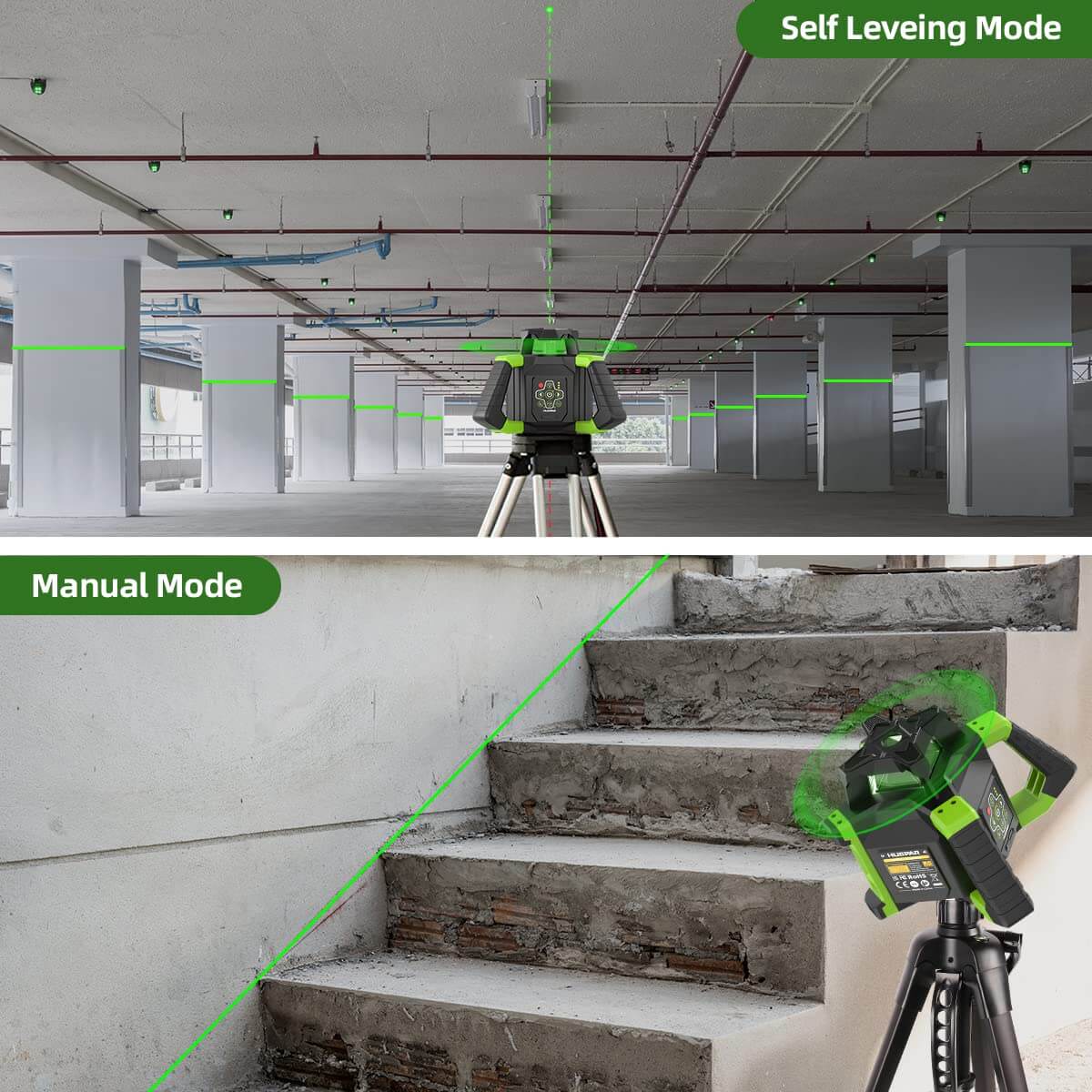
This is a self-leveling feature inbuilt into the device, which facilitates quicker set-up and operation, saving a lot of time with minimal chances of going wrong. The moment the device is switched on and the instrument falls within the self-leveling range, the laser line will rapidly stabilize to the right level plane.
Laser levels are very versatile and suit a variety of general construction tasks, including laying foundations, setting deck supports, installing cabinets and fixtures, and many other interior and exterior leveling applications.
Electronic Self-Leveling
Electronic self-leveling rotary laser levels employ advanced electronic sensors with servo motors that naturally balance the laser beam without needing a mechanical pendulum system to do so. In this respect, the technology applied allows for very accurate self-leveling, often within 1/16 inch or better accuracy over long distances.
In addition to superior leveling accuracy, electronic self-leveling levels also tend to have a larger self-leveling range of 5-10 degrees off-level. Tilting the level out of this range will simply stop it from rotating, with an audible or visible warning, rather than project an inaccurate beam.
More advanced levels in these classes also often allow for grade setting functions, vertical self-aligning modes of operation, and remote control capabilities from a separate laser detector unit. The resultant electronic self-leveling rotary laser levels are, therefore, highly priced but extremely accurate and convenient for a professional contractor or tradesperson.
Rotary Laser Level Wavelength
The wavelength of a rotary laser level determines the color and visibility of the projected beam. These levels typically operate in the visible light spectrum, with red and green being the most common colors.
Color Spectrum and Visibility
Laser beams are also monochromatic, as they emit light at only one specific wavelength. The human eye can be most sensitive within the green-yellow region, roughly about 555 nanometers. For that matter, the green laser beam becomes brighter and well more visible to the bare eye than other colors.
Red vs. Green Laser Beams
Traditionally, rotary laser levels have used red laser beams at about 635 nanometers of wavelength. While visible, they may be hard to see in bright conditions outdoors or over quite some distances. Green laser beams can provide higher brightness and better contrast on most backgrounds, enabled by a wavelength of about 532 nanometers.
Outdoor Visibility Considerations
In outdoor work, the visibility of the laser beam is an important factor. The green laser beam is more usually visible outdoors, as it can cut through the atmospheric particles and bright sunlight, where the red beams can't. While indoors or in low-light conditions, red beams become almost more visible, as their longer wavelength is less depressed by the human eye's reduced sensitivity to green light.
Laser Intensity
Rotary lasers are classified according to their output power and potential eye safety risk. Its intensity or power is in milliwatts-the bigger, the stronger. The majority of rotary lasers fall under Class 2 or Class 3R laser products, which are the class considered safe for exposure to their direct and reflected beams for a momentary or brief accidental manner.
Class 2 lasers have an output power between 1-5 mW. The power is high enough for the eye to notice but too low to cause permanent eye injury. Generally speaking, though, it could be possible to get temporary flash blindness or afterimages with intentional staring into the beam.
Class 3R lasers are stronger, with output power between 5-500 mW, a higher Class 2, but relatively low risk. One can be at risk of direct eye exposure, and hence one should take proper precautionary measures to avoid viewing the direct beam. This category of lasers may result in eye injury when viewed for more extended periods.
It is very important to exercise proper safety precautions when working with rotary laser levels. Never look directly into the beam of a laser or at its dot, nor should one ever shine it at other individuals. The least amount of power necessary to complete your work should be utilized. Mount the laser securely to avoid accidents that may cause the beam to sweep inadvertently. This could also be complemented by the use of laser safety glasses designed for the particular wavelength.
Accuracy of Rotary Laser Levels
Rotary laser levels tend to be really accurate, which is important for most construction tasks and in the site layout, among other leveling functions. This tool commonly possesses an accuracy of 1/8 inch to 1/4 inch per 100 feet, though higher-end models have the ability to achieve even greater precision.
It means the rotary laser level will hold much higher accuracy and consistency than the traditional leveling devices, such as spirit levels or line levels. Traditional levels rely on the judgment of the operator and thus may be prone to human error, deviations in the surface, or environmental factors. Rotary laser levels project a highly accurate horizontal or vertical reference plane by using advanced optics combined with self-compensating mechanisms.
Accuracy in a rotary laser level is predisposed to several issues: quality laser diode, precision of the rotating mechanism, and the process of calibration. Reputable manufacturers perform a series of tests alongside strict control over the quality of products to make sure that the highest possible accuracy is guaranteed for their products.
First, it has to be specified that as precise the rotary laser levels are, environmental conditions may make them less accurate, such as changes in temperature, vibrations, and even the Earth's curvature on long distances. Of course, proper setup and calibration with adherence to manufacturer instructions are critical to achieving the highest level of accuracy possible.
Working Range of Rotary Laser Levels
Rotary laser levels project a level reference plane over a wide area and thus are intended for indoor and outdoor applications. The conventional expression of working range in these instruments is expressed in diameter or radius.
Indoor applications could include floor leveling or cabinet alignment and would have rotary laser levels with diameters as small as 200 feet to as large as 800 feet. The scale of indoor areas requires a level with a smaller maximum working range. These rotary levels do, however have the resolution to handle virtually any interior construction project.
On the other hand, outdoor rotary laser levels are able to provide a level plane much farther than that. High-quality models can achieve up to 2,000 feet (600 meters) or higher in diameter, thus enabling them to be applied to large-scale construction sites, such as building pads, roadways, and parking lots.
Note that a number of factors can influence the working range of a rotary laser level, depending on ambient light conditions, dust or moisture in the air, and the presence of obstruction or interference. Applications used outdoors normally have reduced ranges when working in direct sunlight or under highly reflective environmental conditions, such as near bodies of water or bright surfaces.
This will maximize the working range-meaning that a higher-intensity rotary laser level should be used if one wants to employ the use of a laser detector or sensor that can detect its beam from farther distances and under more critical lighting conditions.
How to Calibrate a Rotary Laser Level
Proper calibration is essential to ensure the accuracy and reliability of your rotary laser level. Here's a step-by-step guide on how to calibrate your device:
-
Set Up the Laser Level: Allow the rotary laser level to set up on a flat, stable surface and self-level. Ensure the surface is at level and free from obstruction or vibration.
-
Check the Horizontal Beam: After the laser level has self-leveled, rotate the unit 180° and mark on a wall or surface where the horizontal beam is. Rotate the unit 180° again and check to see if it's still at the same height. If there is any discrepancy, readjust the calibration screws or follow the manufacturer's instructions for recalibration of the horizontal beam.
-
Check the Vertical Beam: Allow the vertical beam to project on a wall or some other surface. Then, check that it's absolutely vertical by means of a plumb line or other vertical reference. If any deviation exists, refer to the manufacturer's instructions and recalibrate the vertical beam.
-
Perform a Squaring Test: This test is performed to check whether the laser level is accurately giving readings for 90-degree angles. Project the horizontal and vertical beams on two perpendicular walls or surfaces. Verify, with a framing square or any other right-angle reference, if the beams are going to give you an exact 90-degree angle. If not, work on the calibration screws or follow instructions from the manufacturer about how to recalculate the squaring.
-
Check the Calibration Over Distance: Since the laser level has been calibrated, it has to be appropriately checked that it works with utmost perfection for more extended distances. The laser level should be set up and projected onto surfaces at greater distances, like 10 feet, 20 feet, and 50 feet, checking if the beams stay level and consistent along the range.
-
Repeat and Verify: Repeat the calibration of the laser level to check the accuracy by repeatedly performing the checks. Ensure horizontal and vertical beams are level and square, and that accuracy is maintained over different distances.
-
Follow Manufacturer's Guidelines: Always refer to specific guidelines and recommendations provided by the manufacturer for specific calibration procedures. Some laser levels may have additional steps in calibration or requirements.
Regular calibration keeps your rotary laser level accurate and true. It is generally recommended periodically to do so, largely based on use and the environment it has been used in, or if you ever get that feeling something isn't right with how it's operating.
Conclusion
The rotary laser levels of the future will doubtless provide greater accuracy, multifunctionality with each passing year, as modern construction projects become increasingly complex, requiring an increasingly high level of precision. Perhaps manufacturers will work out models with multiple rotating lasers or even three-dimensional laser projections that will be able to carry out even more detailed leveling and alignment tasks.
In general, the future of rotary laser levels will go towards intelligent, connecting, user-friendliness, and further enable construction professionals to increase efficiency, accuracy, and productivity at job sites.


